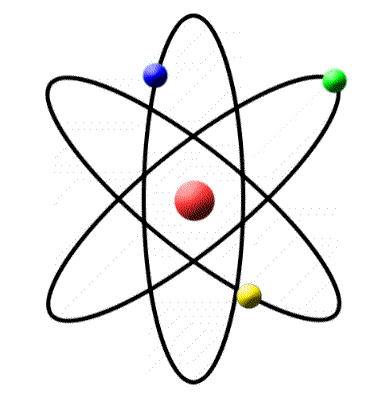If wavelength of the first line of the Paschen series of hydrogen atom is _____ nm, then the wavelength of the second line of this series is nm (Nearest integer)
Correct Answer: 492
Solution and Explanation
The wavelength of emitted radiation is given by the Rydberg formula: \[ \frac{1}{\lambda} = R \left( \frac{1}{n_1^2} - \frac{1}{n_2^2} \right) \] where: - \( R \) is the Rydberg constant (\( 1.097 \times 10^7 \, \text{m}^{-1} \)) - \( n_1 = 3 \) (for the Paschen series) - \( n_2 \) is the upper energy level (\( n_2 = 4 \) for the first line and \( n_2 = 5 \) for the second line)
Step 1: Calculate the wavelength of the first line (\( n_2 = 4 \)). Given \( \lambda = 720 \, \text{nm} \) for the first line: \[ \frac{1}{720 \times 10^{-9}} = R \left( \frac{1}{3^2} - \frac{1}{4^2} \right) \] \[ \frac{1}{720 \times 10^{-9}} = 1.097 \times 10^7 \left( \frac{1}{9} - \frac{1}{16} \right) \] \[ \frac{1}{720 \times 10^{-9}} = 1.097 \times 10^7 \left( \frac{16 - 9}{144} \right) \] \[ \frac{1}{720 \times 10^{-9}} = 1.097 \times 10^7 \times \frac{7}{144} \] This confirms the consistency of the Rydberg formula for the given wavelength.
Step 2: Calculate the wavelength of the second line (\( n_2 = 5 \)). For \( n_2 = 5 \): \[ \frac{1}{\lambda} = 1.097 \times 10^7 \left( \frac{1}{3^2} - \frac{1}{5^2} \right) \] \[ \frac{1}{\lambda} = 1.097 \times 10^7 \left( \frac{1}{9} - \frac{1}{25} \right) \] \[ \frac{1}{\lambda} = 1.097 \times 10^7 \left( \frac{25 - 9}{225} \right) \] \[ \frac{1}{\lambda} = 1.097 \times 10^7 \times \frac{16}{225} \] \[ \frac{1}{\lambda} = 7.809 \times 10^5 \, \text{m}^{-1} \] \[ \lambda = \frac{1}{7.809 \times 10^5} = 4.92 \times 10^{-7} \, \text{m} = 492 \, \text{nm} \]
Top Questions on Hydrogen
Which of the following is/are correct with respect to the energy of atomic orbitals of a hydrogen atom?
(A) \( 1s<2s<2p<3d<4s \)
(B) \( 1s<2s = 2p<3s = 3p \)
(C) \( 1s<2s<2p<3s<3p \)
(D) \( 1s<2s<4s<3d \)
Choose the correct answer from the options given below:For hydrogen-like species, which of the following graphs provides the most appropriate representation of \( E \) vs \( Z \) plot for a constant \( n \)?
[E : Energy of the stationary state, Z : atomic number, n = principal quantum number]Consider the following data:
- Heat of formation of \( CO_2(g) \) = -393.5 kJ mol\(^{-1}\)
- Heat of formation of \( H_2O(l) \) = -286.0 kJ mol\(^{-1}\)
- Heat of combustion of benzene = -3267.0 kJ mol\(^{-1}\)
The heat of formation of benzene is ……… kJ mol\(^{-1}\) (Nearest integer).An ideal gas undergoes a cyclic transformation starting from point A and coming back to the same point by tracing the path A→B→C→D→A as shown in the three cases below.

Choose the correct option regarding \(\Delta U\):- The ratio of magnitude of potential energy and kinetic energy for \(5^{th}\) excited state of hydrogen atom is
Questions Asked in JEE Main exam
- For a reaction, $$ {N}_2{O}_5(g) \rightarrow 2{NO}_2(g) + \frac{1}{2} {O}_2(g) $$ in a constant volume container, no products were present initially. The final pressure of the system when 50% of the reaction gets completed is:
- JEE Main - 2025
- Chemical Reactions
- If the image of the point $ P(1, 0, 3) $ in the line joining the points $ A(4, 7, 1) $ and $ B(3, 5, 3) $ is $ Q(\alpha, \beta, \gamma) $, then $ \alpha + \beta + \gamma $ is equal to:
- JEE Main - 2025
- 3D Geometry
Among the following cations, the number of cations which will give characteristic precipitate in their identification tests with
\(K_4\)[Fe(CN)\(_6\)] is : \[ {Cu}^{2+}, \, {Fe}^{3+}, \, {Ba}^{2+}, \, {Ca}^{2+}, \, {NH}_4^+, \, {Mg}^{2+}, \, {Zn}^{2+} \]- JEE Main - 2025
- Qualitative Analysis
A solution of aluminium chloride is electrolyzed for 30 minutes using a current of 2A. The amount of the aluminium deposited at the cathode is _________
- JEE Main - 2025
- Electrolysis
If \( z \) is a complex number and \( k \in \mathbb{R} \), such that \( |z| = 1 \), \[ \frac{2 + k^2 z}{k + \overline{z}} = kz, \] then the maximum distance from \( k + i k^2 \) to the circle \( |z - (1 + 2i)| = 1 \) is:
- JEE Main - 2025
- Complex numbers
Concepts Used:
Atoms
- The smallest unit of matter indivisible by chemical means is known as an atom.
- The fundamental building block of a chemical element.
- The smallest possible unit of an element that still has all the chemical properties of that element.
- An atom is consisting of a nucleus surrounded by one or more shells of electrons.
- Word origin: from the Greek word atomos, which means uncuttable, something that cannot be divided further.
All matter we encounter in everyday life consists of smallest units called atoms – the air we breath consists of a wildly careening crowd of little groups of atoms, my computer’s keyboard of a tangle of atom chains, the metal surface it rests on is a crystal lattice of atoms. All the variety of matter consists of less than hundred species of atoms (in other words: less than a hundred different chemical elements).

Every atom consists of an nucleus surrounded by a cloud of electrons. Nearly all of the atom’s mass is concentrated in its nucleus, while the structure of the electron cloud determines how the atom can bind to other atoms (in other words: its chemical properties). Every chemical element can be defined via a characteristic number of protons in its nucleus. Atoms that have lost some of their usual number of electrons are called ions. Atoms are extremely small (typical diameters are in the region of tenths of a billionth of a metre = 10-10 metres), and to describe their properties and behaviour, one has to resort to quantum theory.